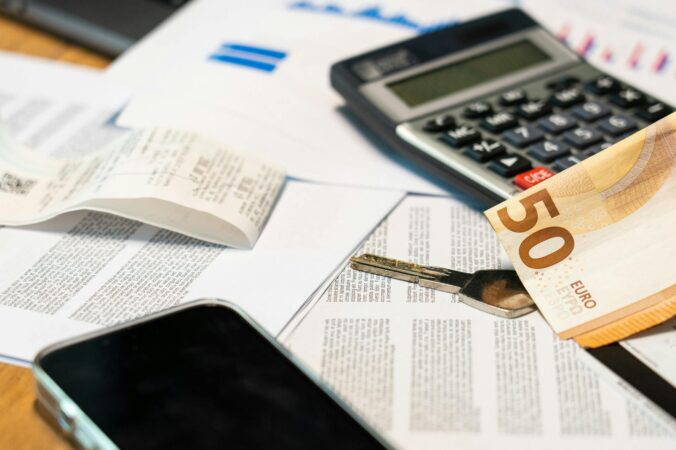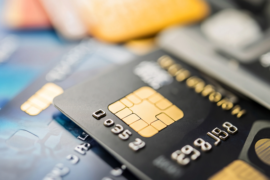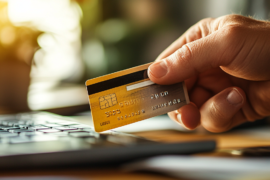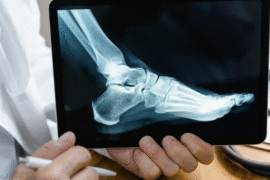This article may contain references to products or services from one or more of our advertisers or partners. We may receive compensation when you click on links to those products or services. Nonetheless, our opinions are our own.
The information presented in this article is accurate to the best of our knowledge at the time of publication. However, information is subject to change, and no guarantees are made about the continued accuracy or completeness of this content after its publication date.
Consumer debt often accumulates quietly, through everyday use of credit cards, personal loans, or financing for large purchases. Over time, balances grow, interest compounds, and financial stress begins to weigh heavily. Though this type of debt is common, it is not insurmountable. With a clear plan and informed decisions, it is possible to regain financial stability and independence.
- What Is Consumer Debt and Why It Matters
- Types of Consumer Debt and Their Financial Implications
- Evaluating Your Debt and Planning the Next Move
- Debt Repayment Methods That Work
- Long-Term Financial Habits That Reduce Debt Risk
- Options for Debt Relief When Repayment Isn’t Feasible
- Conclusion
- Frequently Asked Questions
- Recommended Reads
What Is Consumer Debt and Why It Matters
Consumer debt refers to money borrowed for personal expenses rather than business or investment purposes. This includes credit card balances, auto loans, personal loans, medical bills, and student loans. While access to credit can be beneficial, it can also become burdensome when not managed carefully. Persistent debt can limit savings, reduce financial flexibility, and negatively affect mental and emotional well-being. Interest charges can snowball quickly, particularly on revolving accounts like credit cards. Over time, even modest debts may interfere with long-term financial goals such as homeownership, retirement, or emergency preparedness.
Types of Consumer Debt and Their Financial Implications
Each form of consumer debt carries its own terms, interest rates, and risks. Recognizing the differences can help you prioritize repayment and avoid future liabilities.
Common Types of Consumer Debt
- Credit Card Debt High interest rates and frequent use for discretionary spending often lead to rising balances and mounting costs.
- Personal Loans Typically unsecured, personal loans are used for debt consolidation or large purchases. Missed payments can lead to penalties and credit damage.
- Auto Loans These are secured by the vehicle and may carry moderate interest rates. Borrowers risk negative equity if a car’s value declines faster than the loan is repaid.
- Medical Debt Unexpected medical bills can disrupt budgets, particularly when insurance coverage is limited or absent.
- Student Loans Extended repayment periods may delay other financial milestones if not managed with a long-term plan.
Evaluating Your Debt and Planning the Next Move
Before beginning repayment, gather a complete picture of your current obligations. A clear snapshot can guide which debts to tackle first and which repayment strategy to adopt.
Initial Actions to Take
- List Every Debt Include all balances, minimum payments, and interest rates.
- Review Your Monthly Budget Calculate total income, fixed expenses, and areas where spending can be reduced.
- Allocate Fixed Amounts Toward Debt Designate a portion of your income specifically for repayment each month.
- Seek Guidance When Necessary Certified financial counselors can assist with realistic strategies and advocacy with lenders.
Voted "Best Overall Budgeting App" by Forbes and WSJ
Monarch Money helps you budget, track spending, set goals, and plan your financial future—all in one app.
Get 50% OFF your first year with code MONARCHVIP
Debt Repayment Methods That Work
Choosing an appropriate repayment method depends on your financial habits, income stability, and the types of debt you owe. Two widely used approaches are outlined below.
Repayment Strategies
- Snowball Method Focus on paying off the smallest debt first, while maintaining minimum payments on others. As each balance is cleared, momentum builds.
- Avalanche Method Prioritize debts with the highest interest rates first. This minimizes the total interest paid over time and shortens the overall repayment period.
- Debt Consolidation Combines multiple debts into one loan, often with a lower interest rate, which simplifies payments and may reduce total costs.
- Realistic Goal-Setting Establish achievable benchmarks such as reducing debt by a set percentage over six months or creating a payoff timeline.
- Emergency Savings A small emergency fund can prevent new debt from forming when unexpected expenses arise.
Long-Term Financial Habits That Reduce Debt Risk

Once repayment begins, consistency and discipline play an important role in staying on track. Long-term financial wellness is shaped not only by reducing debt but also by preventing its return.
Healthy Habits to Adopt
- Track All Expenses Awareness of spending habits is the foundation of financial control.
- Visualize Your Debts Create a chart or list showing balances, interest rates, and minimum payments.
- Commit to One Repayment Approach Choose a method (snowball or avalanche) and assess progress monthly.
- Build an Emergency Fund Even small contributions can prevent future reliance on credit.
- Schedule Financial Reviews Revisit your budget and progress every 30–60 days to make timely adjustments.
Options for Debt Relief When Repayment Isn’t Feasible
In situations where income is unstable or balances are unmanageable, formal relief options may be appropriate.
Debt Relief Choices and Their Impacts
| Option | Best Suited For | Credit Score Impact |
|---|---|---|
| Debt Consolidation | Individuals with good credit and high-interest debt | Low to Moderate |
| Credit Counseling | Those needing structured plans and budgeting help | Minimal |
| Debt Settlement | Unable to meet minimums but able to offer lump sums | Significant |
| Bankruptcy | No viable path to repay debt | Severe |
These paths should be approached carefully and, ideally, with professional input.
Conclusion
Overcoming consumer debt involves more than cutting back; it requires consistent budgeting, strategic repayment, and long-term planning. While the path is not always quick, disciplined choices supported by accurate information can restore both financial freedom and peace of mind.
Frequently Asked Questions
What qualifies as consumer debt?
Consumer debt refers to any borrowed money used for personal goods and services rather than investment or business purposes.
How does consumer debt affect financial stability?
Large or unmanaged debt reduces disposable income, impacts credit scores, and limits access to future credit. It may also create chronic financial strain.
What are the best ways to eliminate consumer debt?
Start by evaluating all debts, prioritizing high-interest accounts, and choosing a sustainable repayment method. Budgeting and emergency savings help avoid new debt.
Is it possible to negotiate with lenders?
Yes. Many creditors are open to modified payment schedules or reduced interest when approached early and transparently.
When should professional help be considered?
If you miss payments consistently, feel overwhelmed, or cannot reduce balances despite effort, credit counseling or debt relief may be appropriate.

Reviewed and edited by Albert Fang.
See a typo or want to suggest an edit/revision to the content? Use the contact us form to provide feedback.
At FangWallet, we value editorial integrity and open collaboration in curating quality content for readers to enjoy. Much appreciated for the assist.
Did you like our article and find it insightful? We encourage sharing the article link with family and friends to benefit as well - better yet, sharing on social media. Thank you for the support! 🍉
Article Title: What Is Consumer Debt and How Can You Get Out of It?
https://fangwallet.com/2025/06/23/what-is-consumer-debt-and-how-can-you-get-out-of-it/The FangWallet Promise
FangWallet is an editorially independent resource - founded on breaking down challenging financial concepts for anyone to understand since 2014. While we adhere to editorial integrity, note that this post may contain references to products from our partners.
The FangWallet promise is always to have your best interest in mind and be transparent and honest about the financial picture.
Become an Insider

Subscribe to get a free daily budget planner printable to help get your money on track!
Make passive money the right way. No spam.
Editorial Disclaimer: The editorial content on this page is not provided by any of the companies mentioned. The opinions expressed here are the author's alone.
The content of this website is for informational purposes only and does not represent investment advice, or an offer or solicitation to buy or sell any security, investment, or product. Investors are encouraged to do their own due diligence, and, if necessary, consult professional advising before making any investment decisions. Investing involves a high degree of risk, and financial losses may occur including the potential loss of principal.
Source Citation References:
+ Inspo
There are no additional citations or references to note for this article at this time.












































